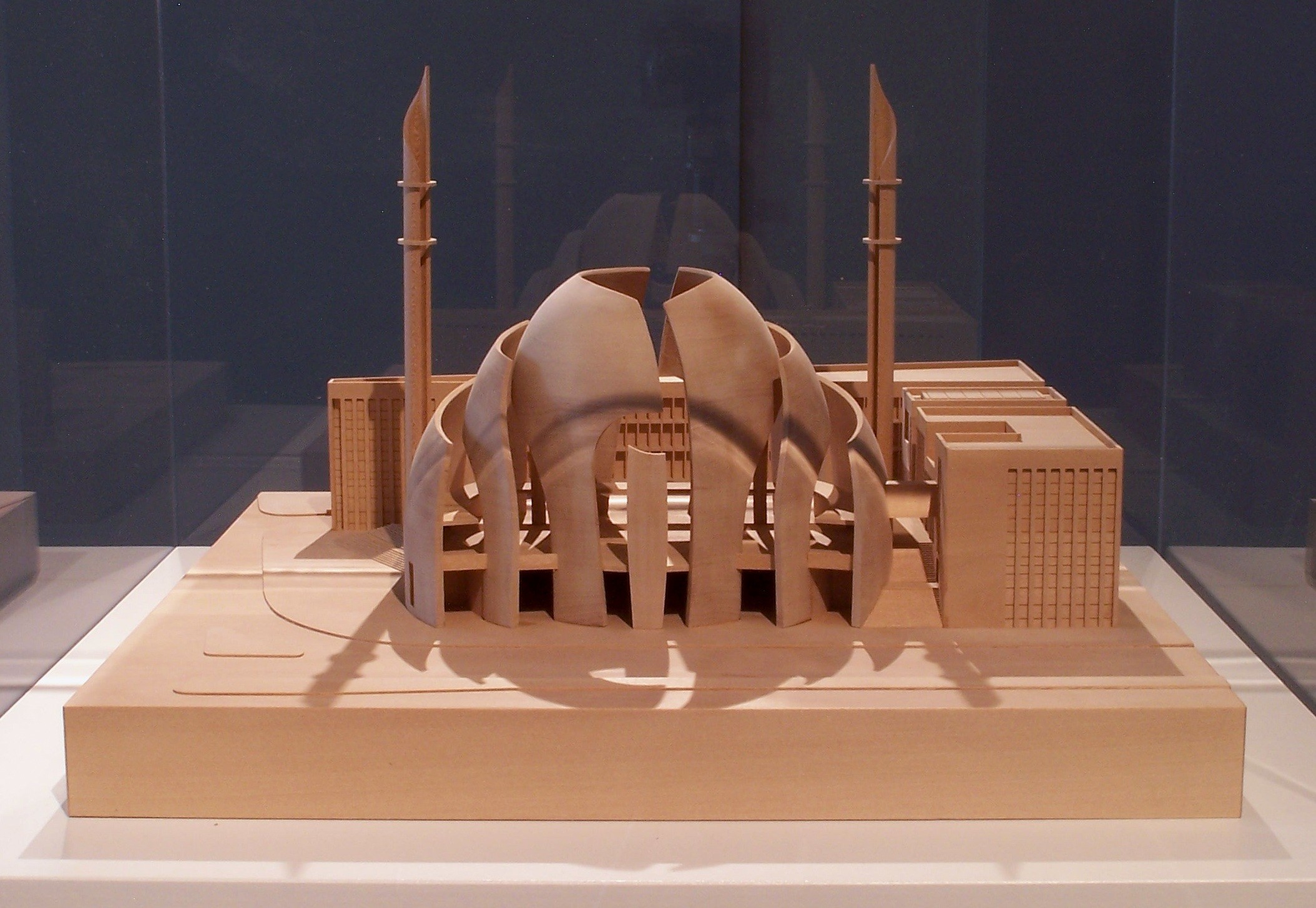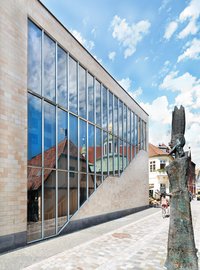Architekturmodell der Zentralmoschee der Türkisch-Islamischen Union der Anstalt für Religion (DITIB) in Köln-Ehrenfeld. Es handelt sich um eine detailgetreue Darstellung des Gebäudekomplexes im Maßstab 1:200 mit mehrfach durchbrochener Kuppel, breitem Treppenaufgang, zwei Minaretten, Nebengebäuden und umliegenden Straßenzügen. Das an der Venloer Straße errichtete und am 29.09.2018 eingeweihte Gebäude ist ein Gemeinschaftsprojekt der Architekten Gottfried und Paul Böhm. Paul Böhm ist der Enkel von Dominikus Böhm, der 1937 das Heimathaus Münsterland in Telgte baulich erweitert hat. Die DITIB-Moschee ist das bundesweit größte Gebetshaus für Muslime. Allein die beiden runden Minarette sind 55 Meter hoch.
[Emil Schoppmann]
en

